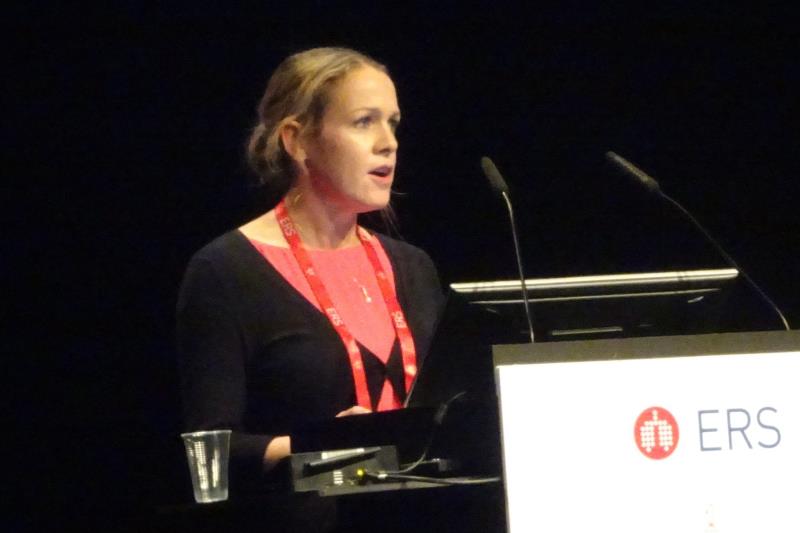 Dr Lauren Troy from the University of Sydney in Australia
Dr Lauren Troy from the University of Sydney in AustraliaTransbronchial lung cryobiopsy (TBLC) performs well in diagnosing interstitial lung disease (ILD), showing an accuracy similar to that of surgical lung biopsy (SLB), according to the results of the COLDICE study presented at the European Respiratory Society (ERS) International Congress 2019.
“COLDICE is the first directly comparative study to show a high agreement between TBLC and SLB for ILD diagnosis,” said principal investigator Dr Lauren Troy from the University of Sydney in Australia. “This study supports the clinical utility of TBLC as an alternative to SLB for patients requiring lung tissue for [such a] diagnosis.”
The study population comprised 65 patients (mean age, 66.1 years; 52 percent female) with a mean forced vital capacity of 83.7 percent and mean diffusing capacity for carbon monoxide of 63.4 percent. None of them had advanced disease.
All patients underwent screening at a centralized [multidisciplinary discussion (MDD)] and were biopsied with both techniques under one anaesthetic. TBLC (mean tissue size, 7.1 mm) and SLB (mean tissue size, 46.5 mm) samples were each taken from two separate ipsilateral lobes.
TBLC and SLB demonstrated high levels of agreement for histopathological interpretation (definite or probable usual interstitial pneumonia, indeterminate for usual interstitial pneumonia, and alternative diagnosis; 70.8 percent; weighted κ, 0.70, 95 percent CI, 0.55–0.86). Likewise, diagnostic agreement at MDD was high at 76.9 percent (weighted κ, 0.62, 0.47–0.78). [Lancet Respir Med 2019;doi:10.1016/S2213-2600(19)30342-X]
Of the 39 cases of TBLC samples with high or definite diagnostic confidence at MDD, 37 (95 percent) were concordant with SLB diagnoses. On the other hand, of the 26 cases initially considered low-confidence or unclassifiable TBLC diagnoses, six (23 percent) were reclassified by SLB to alternative high-confidence or definite MDD diagnoses.
Troy and colleagues noted that the six cases were more likely to be diagnosed as ILD when using TBLC samples and as hypersensitivity pneumonitis when using SLB.
“No new safety signals emerge[d] for TBLC,” said Troy.
A total of 25 adverse events occurred, including 14 cases of mild-to-moderate airway bleeding due to cryobiopsy.
There were two patients who developed acute exacerbations of idiopathic pulmonary fibrosis within 2 weeks of biopsy, and one of them died 50 days after the procedure, yielding a 90-day mortality of 2 percent. Troy acknowledged that they were not able to pinpoint which procedure, if so, caused these events.
TBLC was performed using a small cryoprobe attached to a therapeutic bronchoscope. This probe was advanced into a peripheral airway until a pleural surface was reached, activated for 3–7 seconds, then removed with the attached tissue specimen. Balloon blockers were placed in the airways until bleeding stopped. After, surgical biopsies were obtained via video-assisted thoracoscopy in the same lobes.
Troy cautioned against extrapolating the results of COLDICE to more marginal candidates with severe lung disease or major medical comorbidities, as well as centres with limited experience in performing TLBC. Additionally, she admitted that they were not able to conduct a cost-benefit analysis due to the study design.
While further studies investigating the safety profile of TBLC are needed, the present data support the clinical utility of cryobiopsy in ILD diagnostic algorithms, according to Troy and her team.